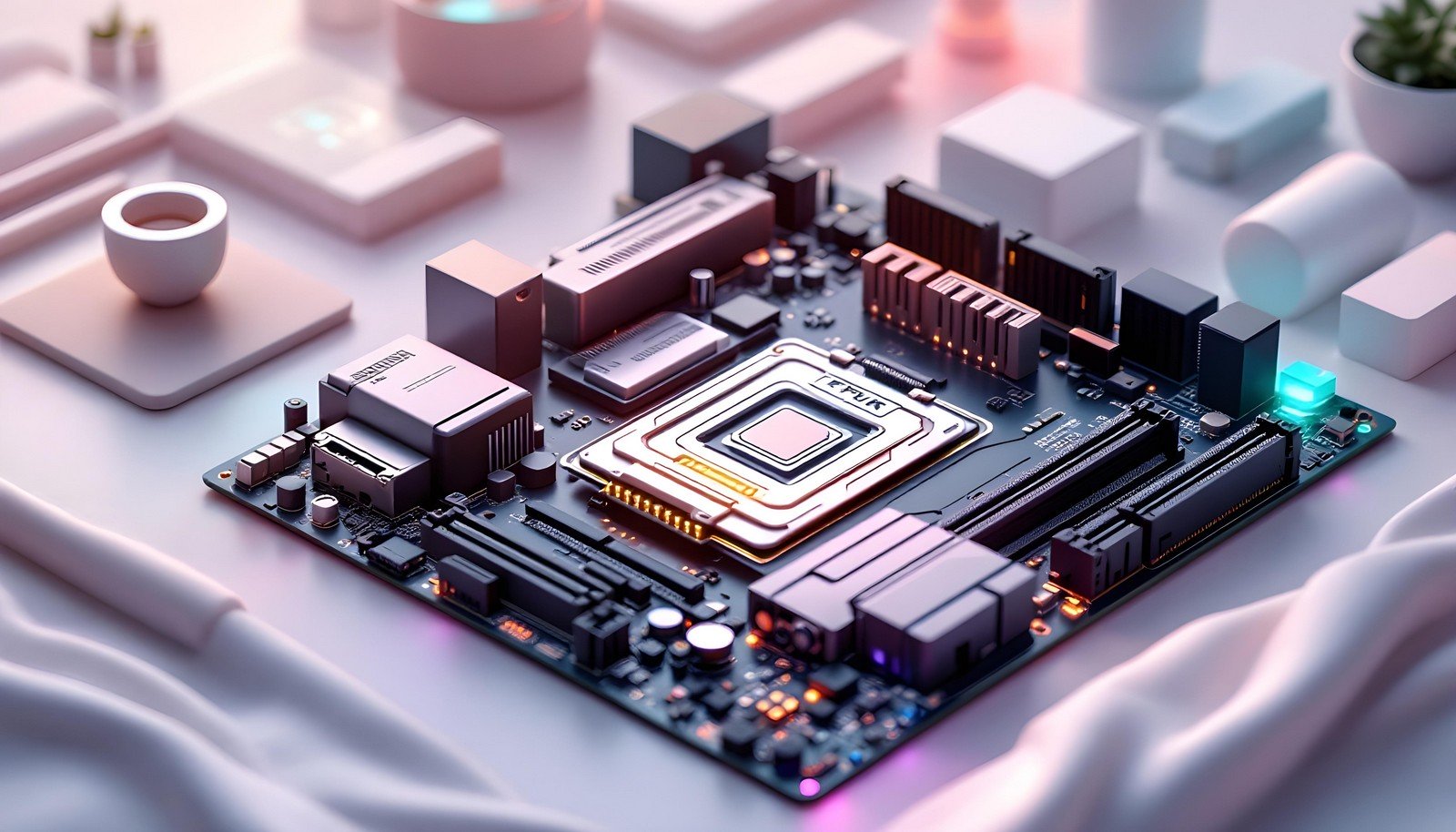ATX Motherboard

Quick Navigation:
- ATX Motherboard Definition
- ATX Motherboard Explained Easy
- ATX Motherboard Origin
- ATX Motherboard Etymology
- ATX Motherboard Usage Trends
- ATX Motherboard Usage
- ATX Motherboard Examples in Context
- ATX Motherboard FAQ
- ATX Motherboard Related Words
ATX Motherboard Definition
An ATX motherboard is a type of computer motherboard that follows the ATX (Advanced Technology eXtended) standard, introduced by Intel in 1995. It is widely used in desktop computers due to its modularity, efficiency, and ability to support powerful processors and extensive connectivity. Key features of an ATX motherboard include standardized mounting points, improved airflow design, and multiple expansion slots for peripherals such as graphics cards and sound cards. ATX boards are larger than micro-ATX or mini-ITX variants, offering greater functionality for advanced users.
ATX Motherboard Explained Easy
Think of a motherboard as the "central hub" inside your computer, where all the other parts like the processor, memory, and storage come together to work as a team. An ATX motherboard is like a big, organized table where every part has its own spot and enough space to fit comfortably. It makes sure all the parts can talk to each other and work together to make your computer run smoothly.
ATX Motherboard Origin
The ATX motherboard design was introduced by Intel in 1995 to address limitations of earlier motherboard standards. It replaced the Baby AT form factor, improving the layout for easier assembly and better cooling. Over the years, ATX has become the dominant standard for personal desktop computers, thanks to its flexibility and upgradeability.
ATX Motherboard Etymology
The term "ATX" comes from "Advanced Technology eXtended," reflecting its evolution from earlier AT (Advanced Technology) standards.
ATX Motherboard Usage Trends
ATX motherboards remain the most popular form factor for desktop PCs, especially in gaming, workstation, and enthusiast markets. With the rise of high-performance computing, ATX boards have adapted to support the latest CPUs, GPUs, and memory technologies. However, smaller form factors like mini-ITX are gaining popularity for compact builds.
ATX Motherboard Usage
- Formal/Technical Tagging:
- Computer Hardware
- Desktop PC
- Motherboard Standards - Typical Collocations:
- "ATX motherboard compatibility"
- "standard ATX layout"
- "full-sized ATX"
- "custom PC build with ATX motherboard"
ATX Motherboard Examples in Context
- A gaming enthusiast chooses an ATX motherboard for its multiple PCIe slots to support dual graphics cards.
- A DIY PC builder installs an ATX motherboard in their case, ensuring plenty of room for future upgrades.
- An ATX motherboard is used in a workstation to provide stable performance for video editing tasks.
ATX Motherboard FAQ
- What is an ATX motherboard?
An ATX motherboard is a standardized motherboard design for desktops, offering modularity and compatibility with many PC components. - What are the dimensions of an ATX motherboard?
Standard ATX motherboards measure 12 x 9.6 inches (305 x 244 mm). - What are the advantages of an ATX motherboard?
ATX motherboards offer more expansion slots, better cooling, and easier cable management. - What is the difference between ATX and Micro-ATX?
Micro-ATX is smaller and has fewer expansion slots compared to standard ATX. - Can I use an ATX motherboard in any PC case?
No, the case must support the ATX form factor. - Are ATX motherboards good for gaming?
Yes, they provide space for high-performance GPUs and advanced cooling solutions. - What power supply is compatible with ATX motherboards?
ATX motherboards require an ATX power supply, which matches their power connectors and dimensions. - Can an ATX motherboard support multiple GPUs?
Yes, many ATX motherboards have multiple PCIe slots for dual or triple GPU setups. - What is the lifespan of an ATX motherboard?
With proper care, an ATX motherboard can last 5–10 years or more. - Is ATX suitable for overclocking?
Yes, most ATX motherboards have robust power delivery systems suitable for overclocking.
ATX Motherboard Related Words
- Categories/Topics:
- Computer Hardware
- PC Building
- Gaming PCs
Did you know?
The ATX standard revolutionized PC building by simplifying component installation and improving cooling efficiency. Before ATX, builders struggled with messy layouts and poor airflow, which often led to overheating issues.
PicDictionary.com is an online dictionary in pictures. If you have questions or suggestions, please reach out to us on WhatsApp or Twitter.Authors | Arjun Vishnu | @ArjunAndVishnu

I am Vishnu. I like AI, Linux, Single Board Computers, and Cloud Computing. I create the web & video content, and I also write for popular websites.
My younger brother, Arjun handles image & video editing. Together, we run a YouTube Channel that's focused on reviewing gadgets and explaining technology.



Comments powered by CComment